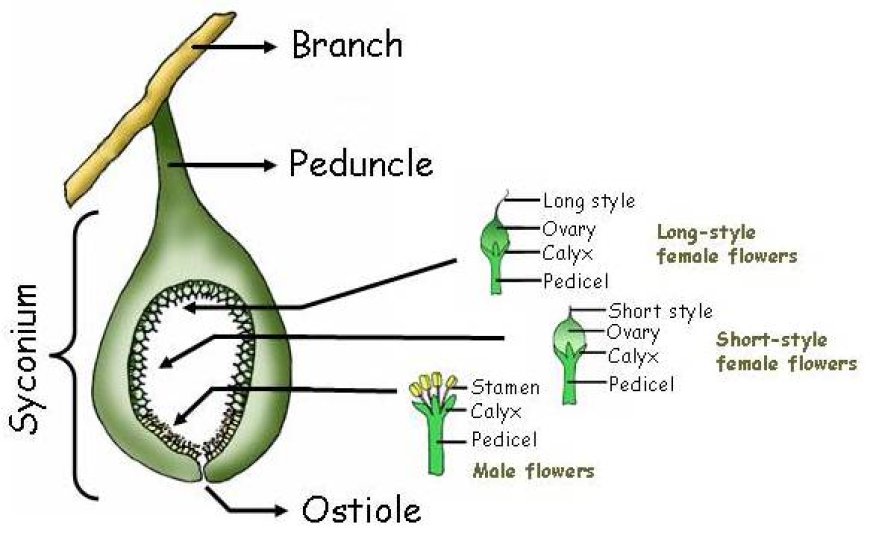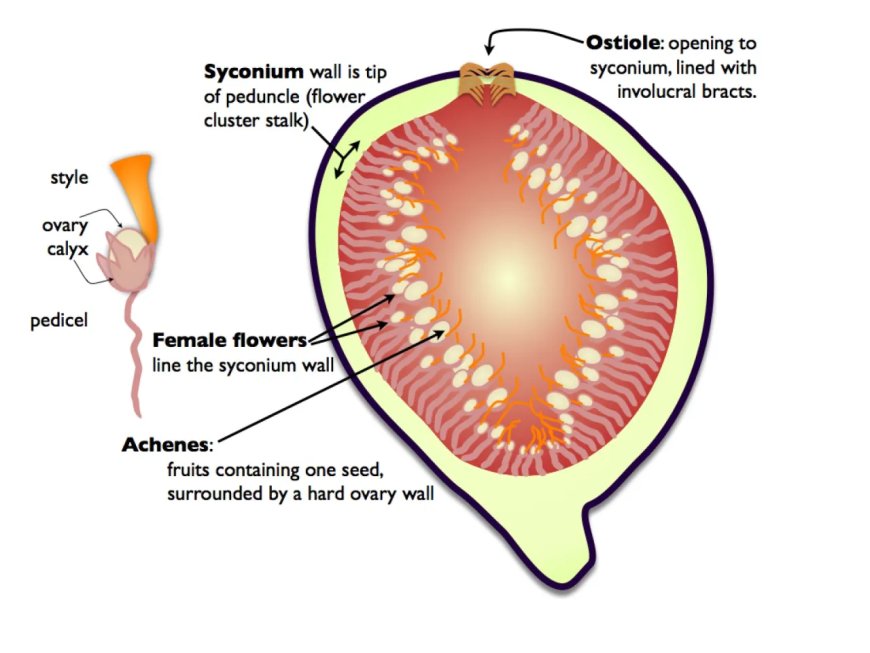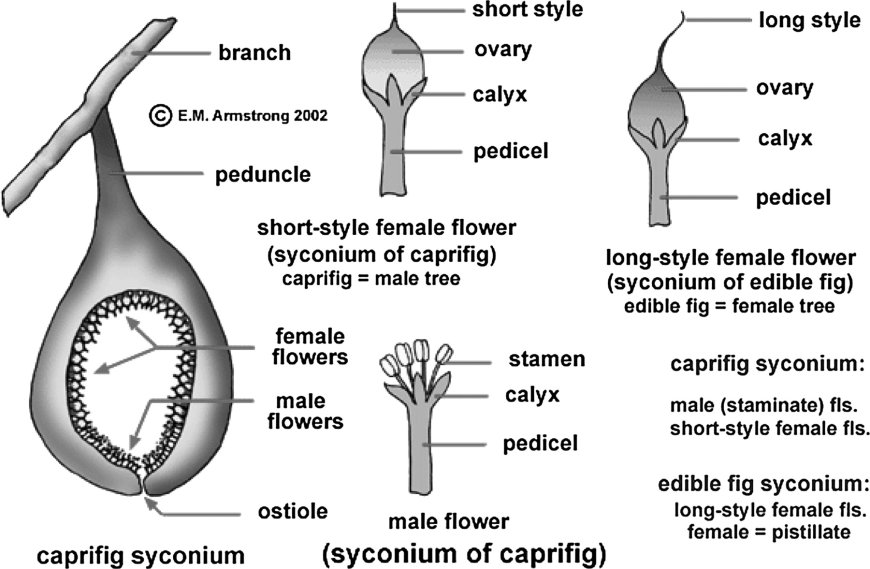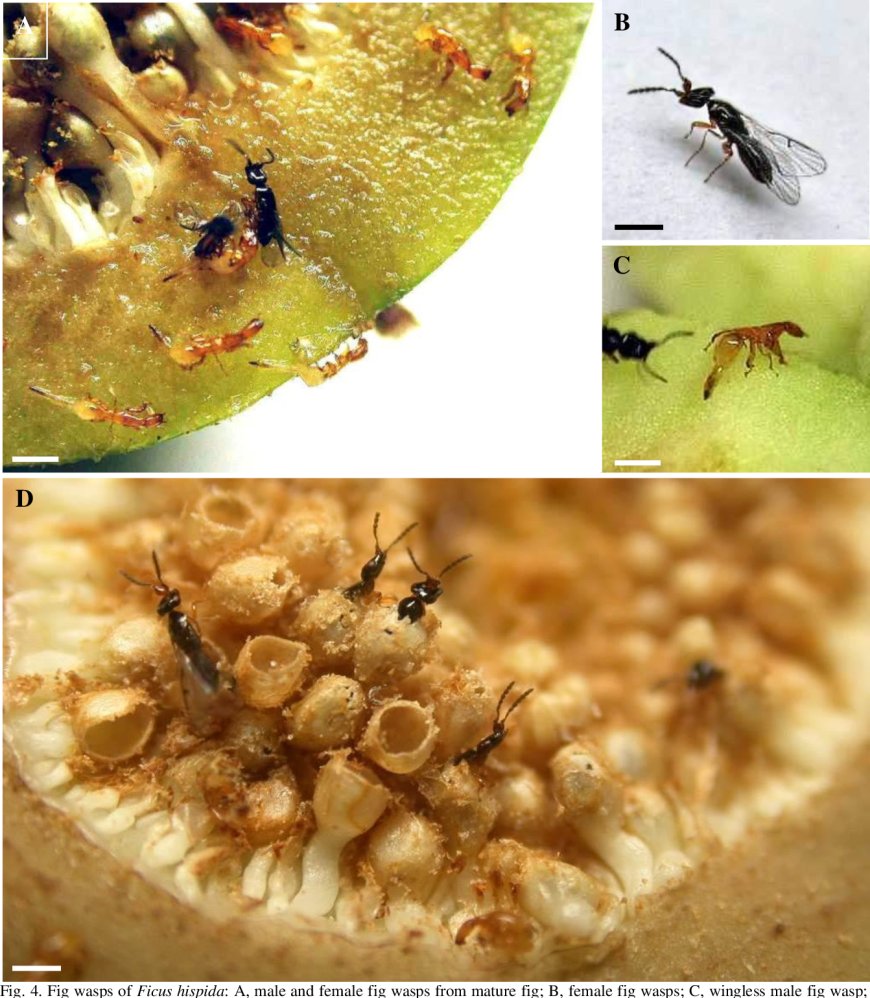The Enigmatic Anatomy of Figs: Exploring the Botanical Marvels of Inverted Flowers
Discover the extraordinary world of figs, the "inverted flowers," through this captivating exploration of their unique anatomy, reproductive marvels, and ecological significance.

Delving into the fascinating world of figs reveals a botanical wonder like no other. The fig fruit, seemingly simple at first glance, possesses a complex and unique anatomy that sets it apart from conventional fruits. Often referred to as an "inverted flower," the fig is, in fact, a collection of numerous flowers, creating an intricate and captivating structure.
The fig's anatomy can be best understood through a series of carefully selected images that vividly illustrate its various components. Each image provides valuable insights into the different aspects of the fig, accompanied by technical jargon that enhances our appreciation for its complexity.

One of the most intriguing aspects of the fig is its unique inflorescence, known as a synconium. The synconium serves as a protective enclosure for the numerous flowers within. This arrangement makes the fig an example of an "enclosed inflorescence," which means that the flowers are tucked away inside the fig's fleshy structure, shielded from the external environment.

Within the synconium, small flowers known as florets flourish in intricate patterns. These florets are unisexual, meaning they are either male or female. The male flowers reside near the opening of the synconium, while the female flowers are situated deeper inside. To achieve successful pollination, specialized fig wasps play a crucial role in transferring pollen between the male and female florets.

The wasp-pollinated figs demonstrate a remarkable example of mutualism, a cooperative relationship between the fig tree and the fig wasp. The wasps lay their eggs in the female flowers and facilitate pollination in the process, ensuring the continuation of both species. But if you want to know more about the fig wasp cycle, here is an article for you.
The fig's intricacy goes beyond its reproductive and culinary marvels. The fig tree, with its lush green leaves and sturdy branches, plays an essential ecological role in various habitats. From providing shelter and food for numerous species to contributing to soil fertility, the fig tree is an ecological linchpin in many ecosystems.
In conclusion, the anatomy of the fig is a captivating subject that showcases the wonders of nature's ingenuity. Its status as an "inverted flower" with an enclosed inflorescence and its intricate relationship with fig wasps make it an extraordinary botanical phenomenon. As we savor the delightful taste and texture of this unique fruit, let us also marvel at the hidden complexities that make the fig a truly remarkable creation of the natural world.
Don't forget, if you want to know more about figs and get all the free benefits Fig Database has to offer, join us today!








